
EXHIBITIONS
Current Exhibitions
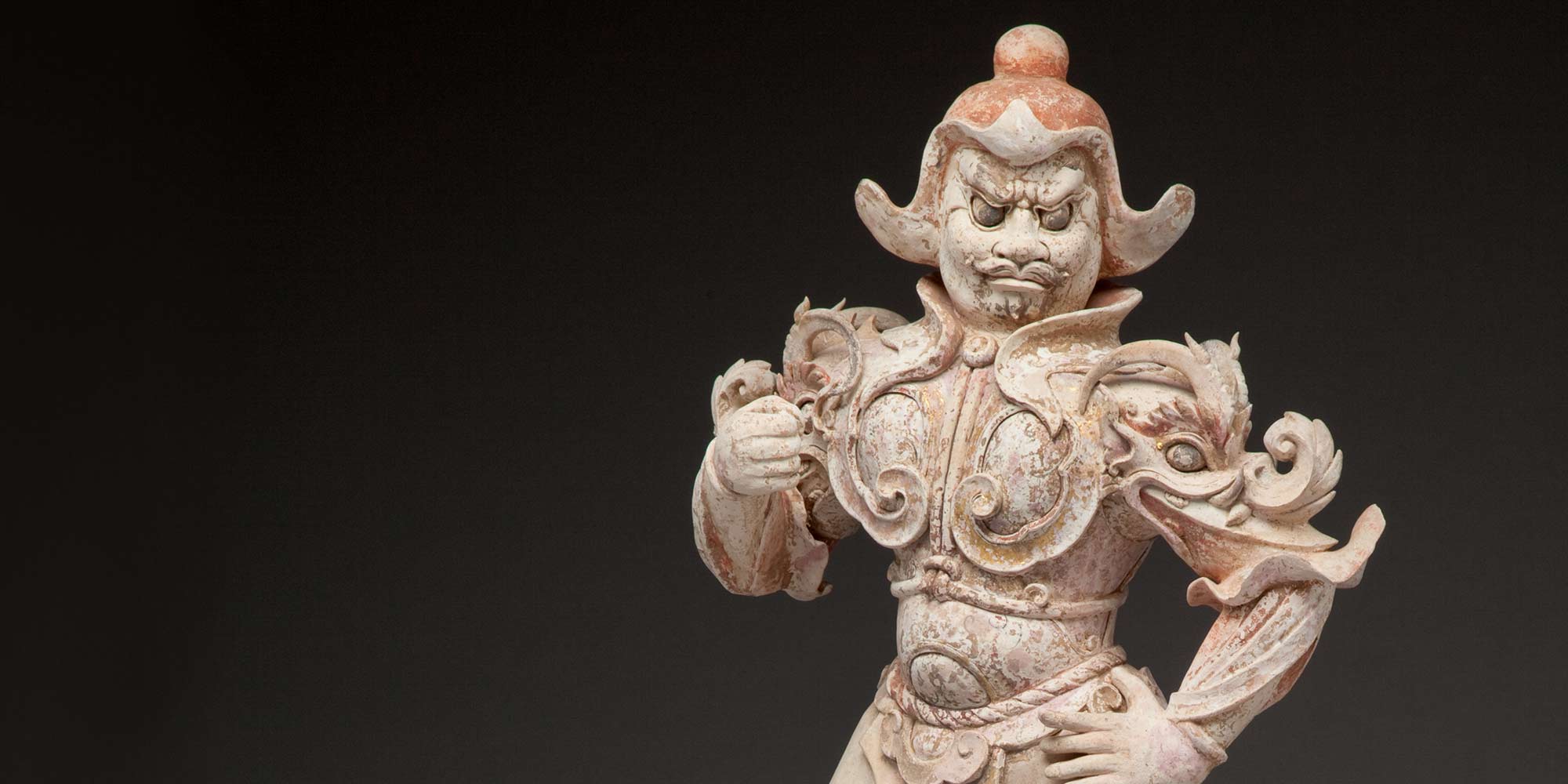
The Conley Collection: Chinese Art from Han and Beyond
Heritage Museum of Asian Art is pleased to announce the generous long-term loan of Chinese art from James E. Conley Jr. As a lifelong admirer of the arts, Mr. Conley has amassed a wonderful collection, most notably, a large amount of Han and Tang dynasty funerary sculptures. Archaic bronzes as well as Ming dynasty sculpture round out the collection, offering visitors a marvelous survey of Chinese art.
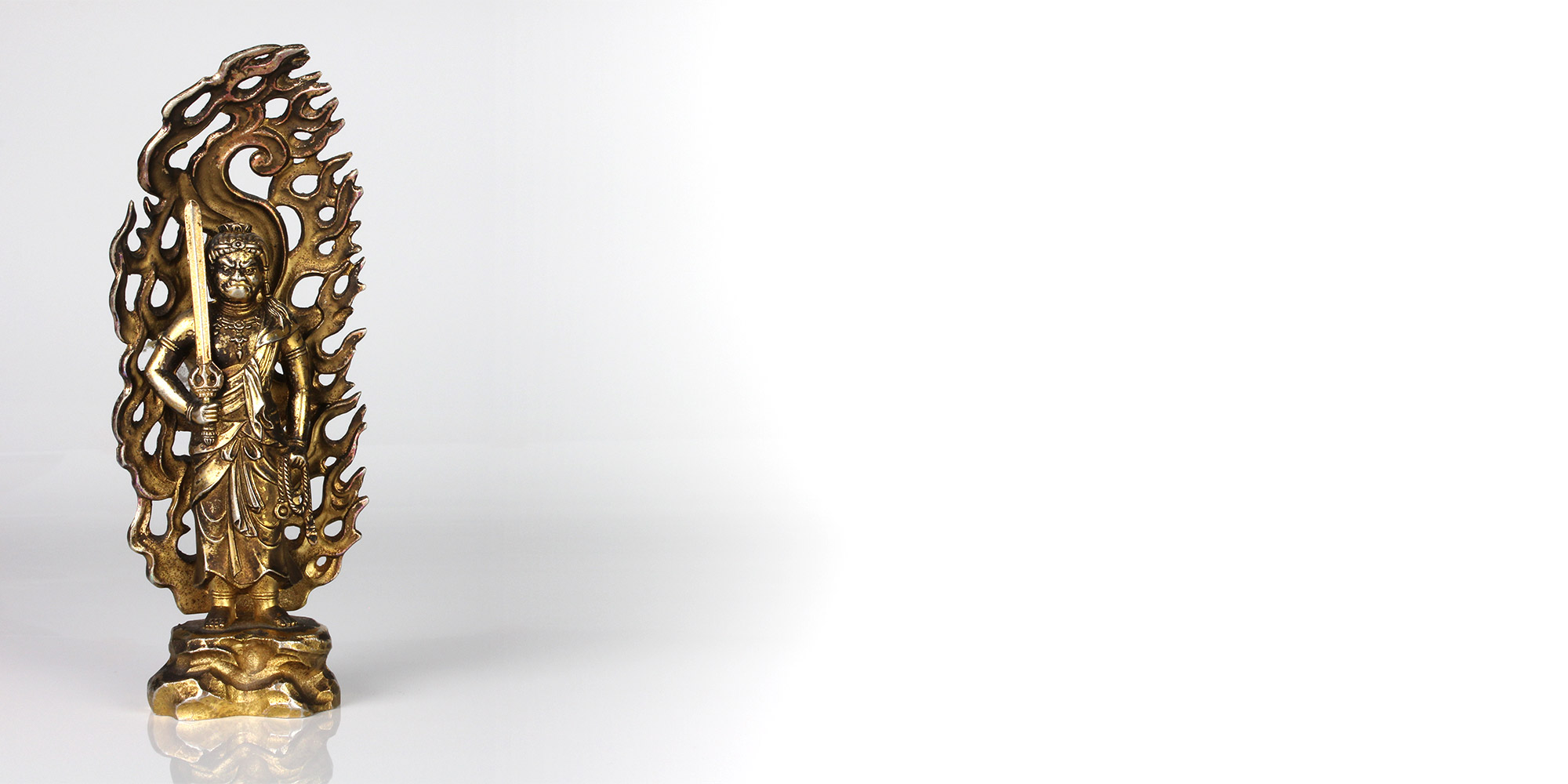
Path to Enlightenment: Buddhist and Religious Art of Japan
Opening September 22, 2019
Shinto is the ancient ethnic religion of Japan, with the belief that kami (spirits) inhabit the natural landscape. When Buddhism arrived to Japan in the sixth century, rather than replacing Shintoism, both were believed to be true. Over time, Japan also developed its own Buddhist teachings, such as Zen. This exhibition features art from Shintoism and various schools or sects of Buddhism including paintings, shrines, wood carvings, and bronze sculpture.he arts, Mr. Conley has amassed a wonderful collection, most notably, a large amount of Han and Tang dynasty funerary sculptures. Archaic bronzes as well as Ming dynasty sculpture round out the collection, offering visitors a marvelous survey of Chinese art.
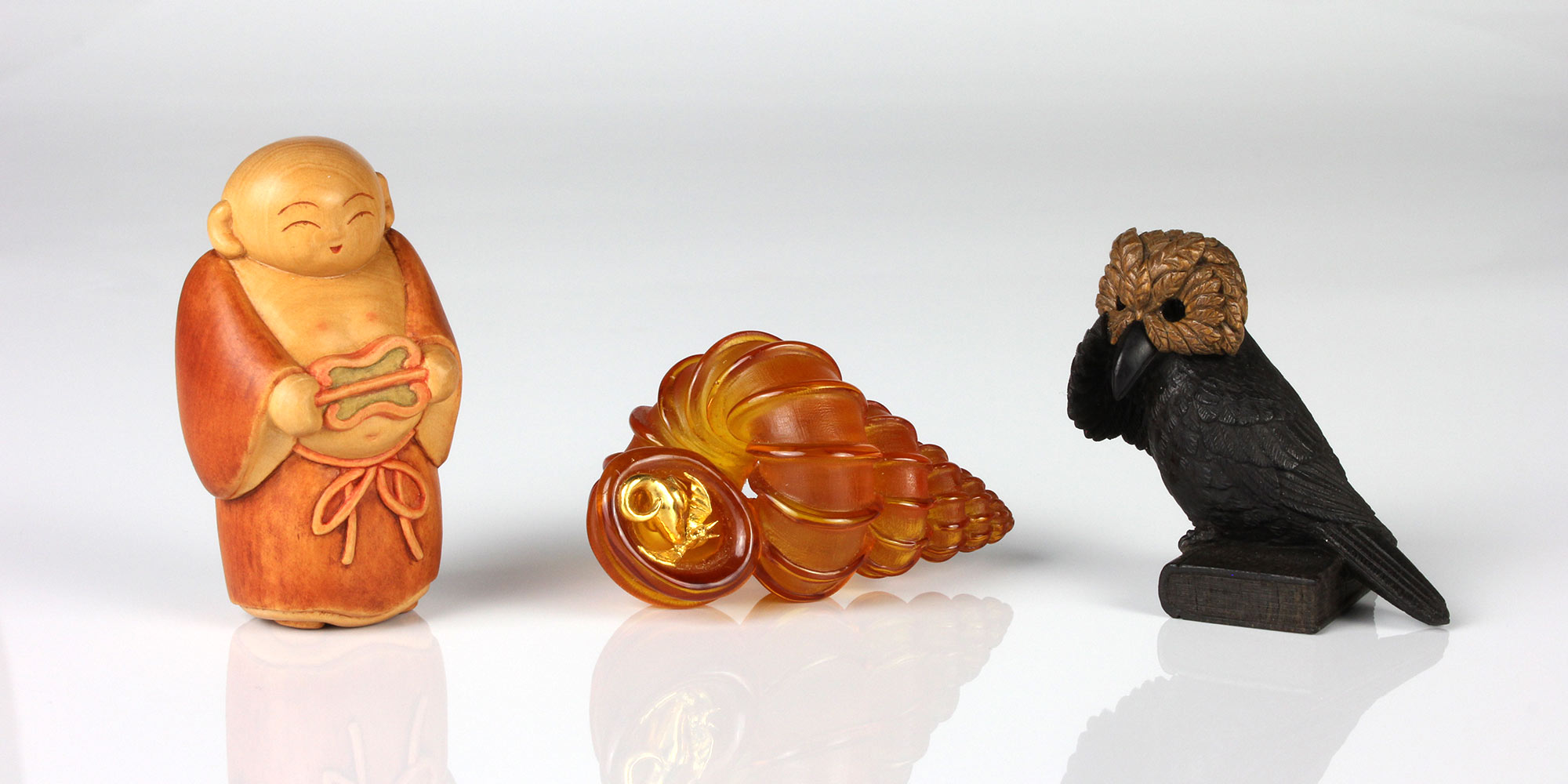
Contemporary Netsuke: Kiho Takagi and Other Artists
Opening September 22, 2019
Like Japanese woodblock printing, the art of netsuke carving flourished during Japan's Edo period (1603-1867). When the Meiji Restoration of 1868 propelled the country into the modern era, foreign trade resumed and the art of netsuke saw a decline. Clothing with pockets replaced kimonos and cigarettes replaced pipes, rendering netsuke unnecessary. By the late 20th century, however, the collecting of netsuke saw a resurgence for both antique and contemporary pieces, with collectors and even carvers from outside Japan. This exhibition highlights Kiho Takagi and a few of these contemporary artists.
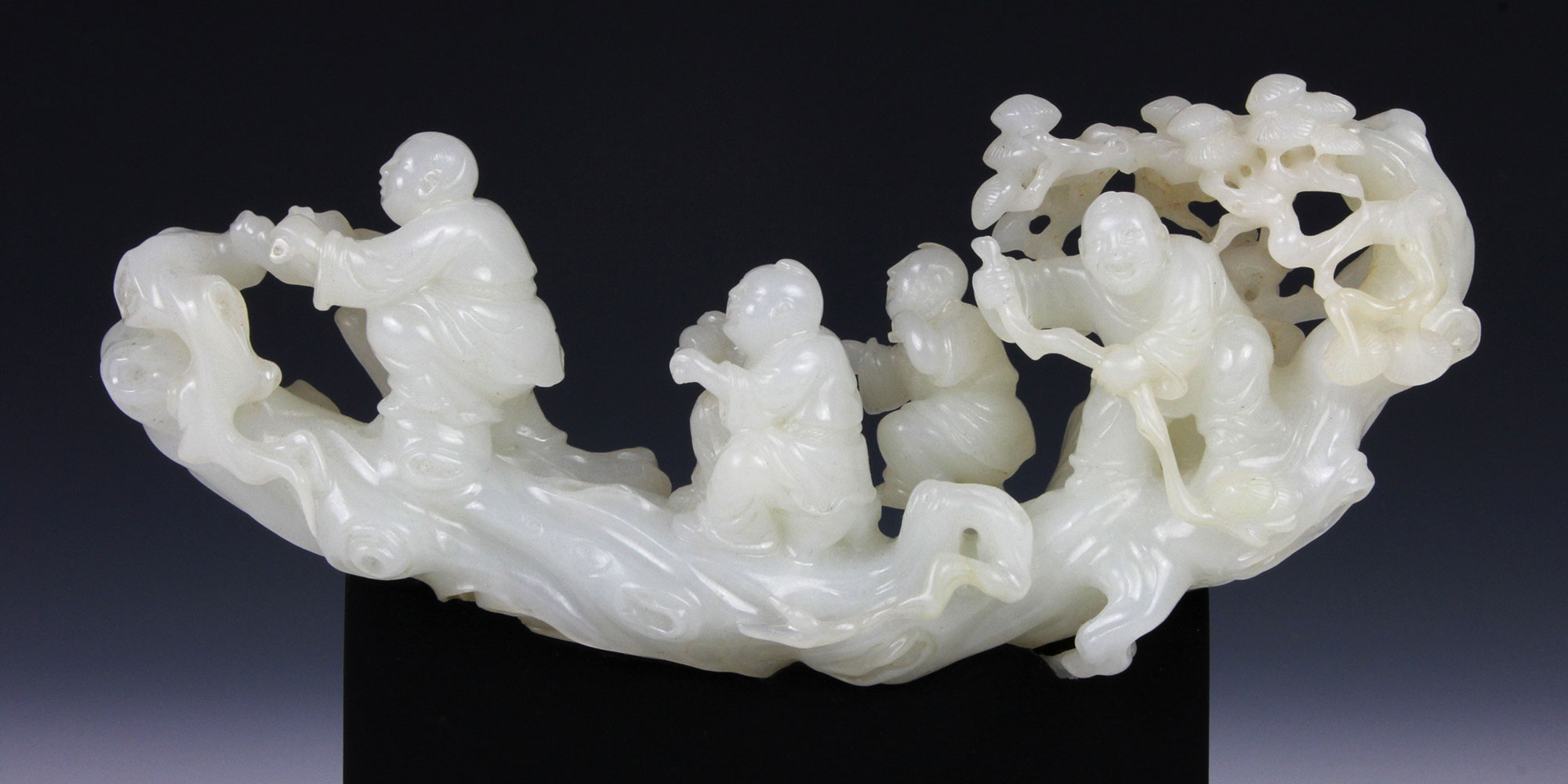
Rediscovered Jade Treasures
May 2019
Magnificent jade works of art are often in the hands of private collectors and rarely seen by the public. This first in what will be a series of exhibitions highlights treasures from several anonymous collectors. It includes jades from neolithic to the 18th century and thematically reflects the collectors’ taste for the art of jade.
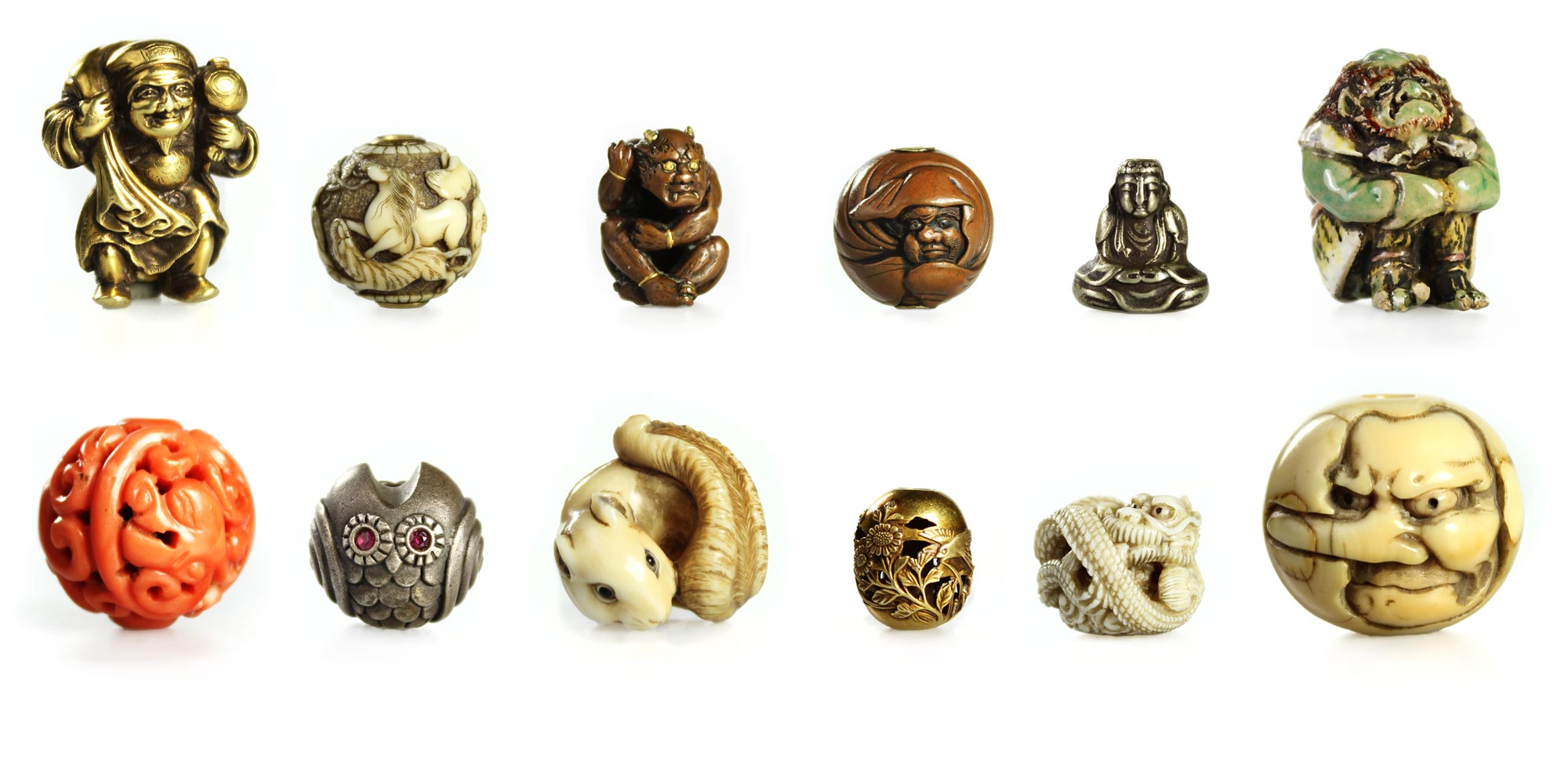
Ojime: Magical Jewels from Japan
Ojime (oh-gee-meh) exemplify the Japanese genius for bringing high art to functional objects. During Japan’s Edo (1600-1868) and Meiji (1868 - 1912) periods, kimonos were basic wearing apparel, but these garments lacked pockets. Women usually carried their personal accessories in their sleeves or tucked into their sashes. Men, however, tied their accessories to a toggled cord, which was suspended from the sash, with the ojime bead as part of the ensemble.
Although ojime were originally functional accessories of kimono apparel, they were beautiful, as well as useful and were superbly crafted with materials believed to possess magical and medicinal properties.
This exhibition showcases over 100 pieces of Ojime from the Kinsey International Art Foundation’s extensive collection, ranging from antique to contemporary works of art. Fans of jewelry, beads, Japan, and art in general should truly enjoy this exhibit.
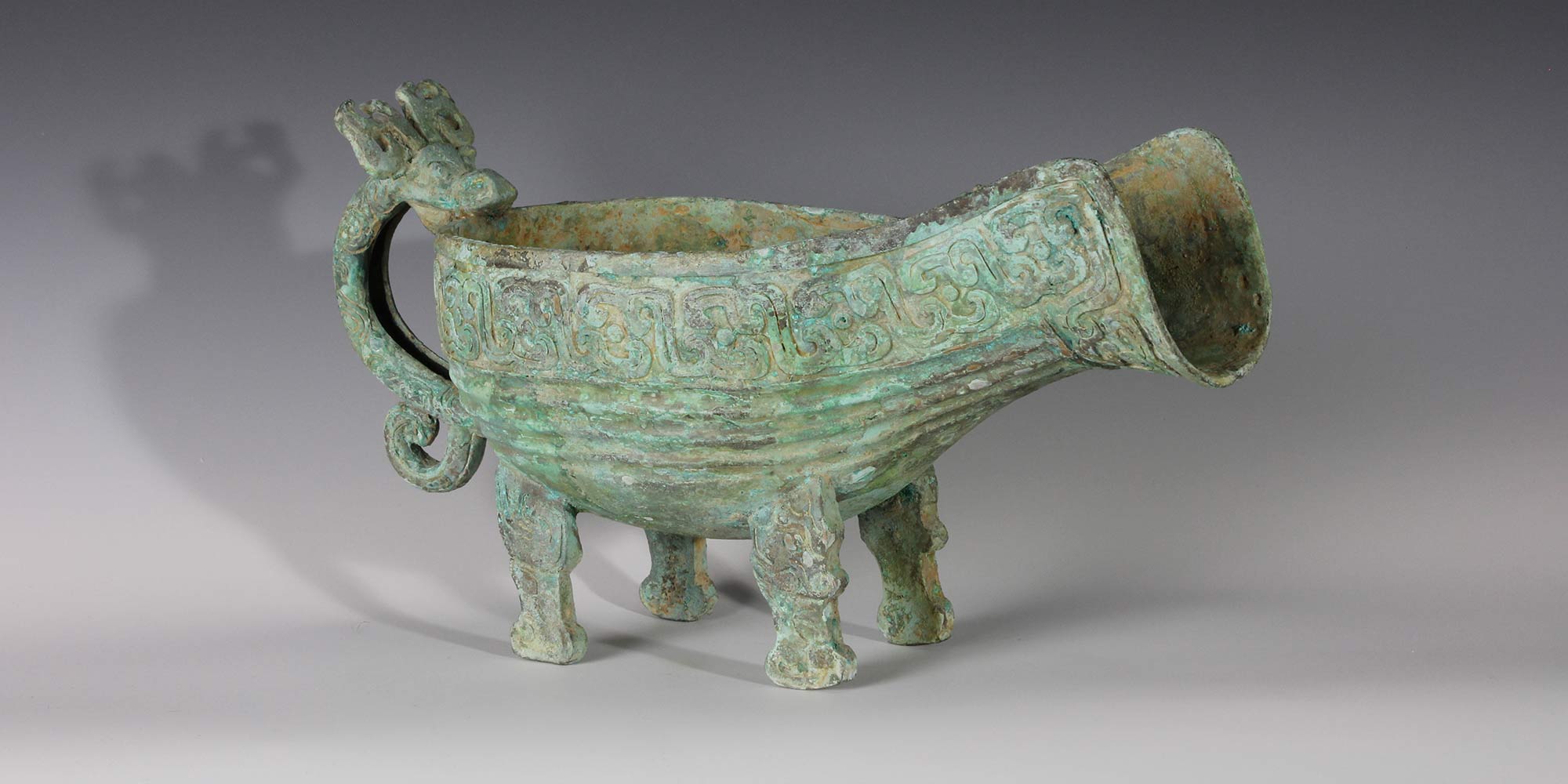
Archaic Chinese Bronzes from Midwest Collections
This exhibition of archaic Chinese ritual bronzes features pieces from numerous collectors with ties to the midwest states, including James E. Conley, Jr., The MacLean Collection, The Winston Family Collection, and museum Executive Director Mr. Jeffrey Moy.
Image: Footed Ladle for Water Yi, Bronze, Spring and Autumn Period, China. On loan from James E. Conley Jr.
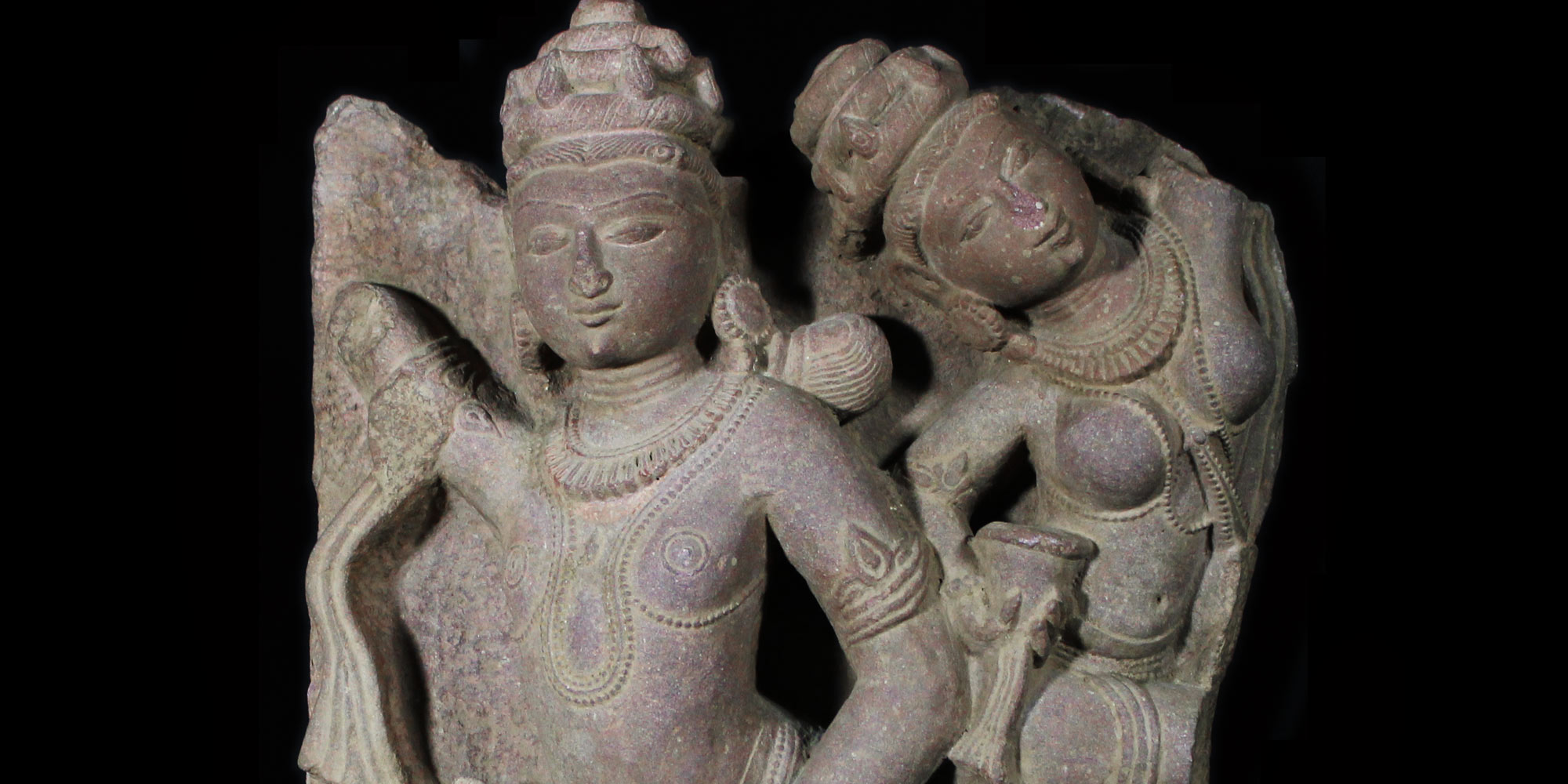
Stone Sculpture of India
The Ramayana is a Hindu epic detailing the story of the hero Rama, who rushes into battle to save his wife Sita from the demon king Ravana. This fragment of pink sandstone portrays the protagonists of the story, Rama and Sita. Although partially missing, Rama’s attribute, the bow, can be seen in his left hand. This piece, along with a small selection of other Buddhist and Hindu stone sculpture from India, recently gifted or loaned to the museum, are now on display.
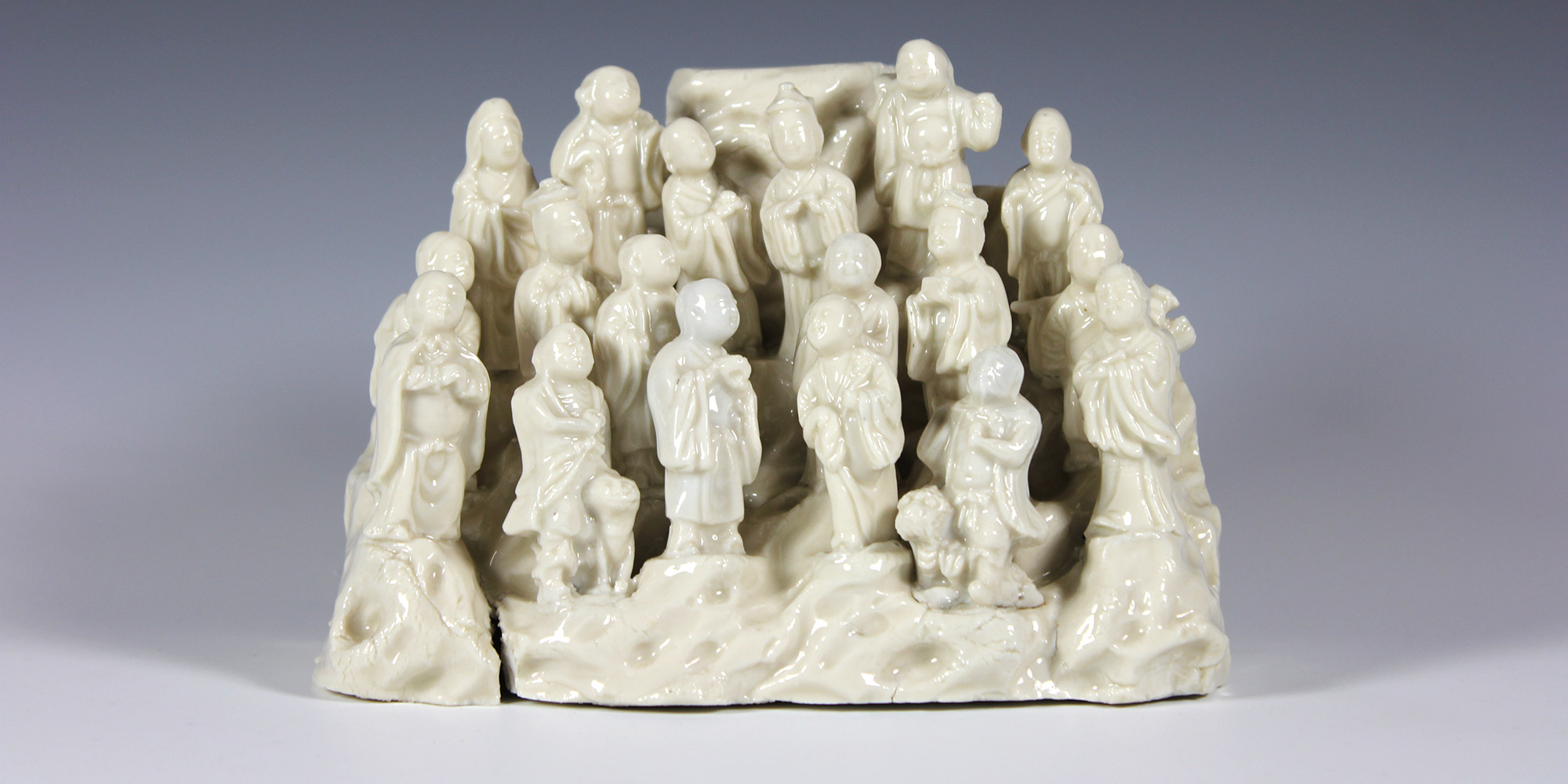
Blanc de Chine: White Wares from the Dehua Kiln
Dehua porcelain is often referred to as Blanc de Chine, a French term meaning "White from China.” It is a clear glazed, ivory white porcelain made for export by the Dehua kilns in the Fujian province, that has been produced from the Ming dynasty (1368-1644) to the present day. A selection of these wares are on display, including a variety of vessel shapes and figures.
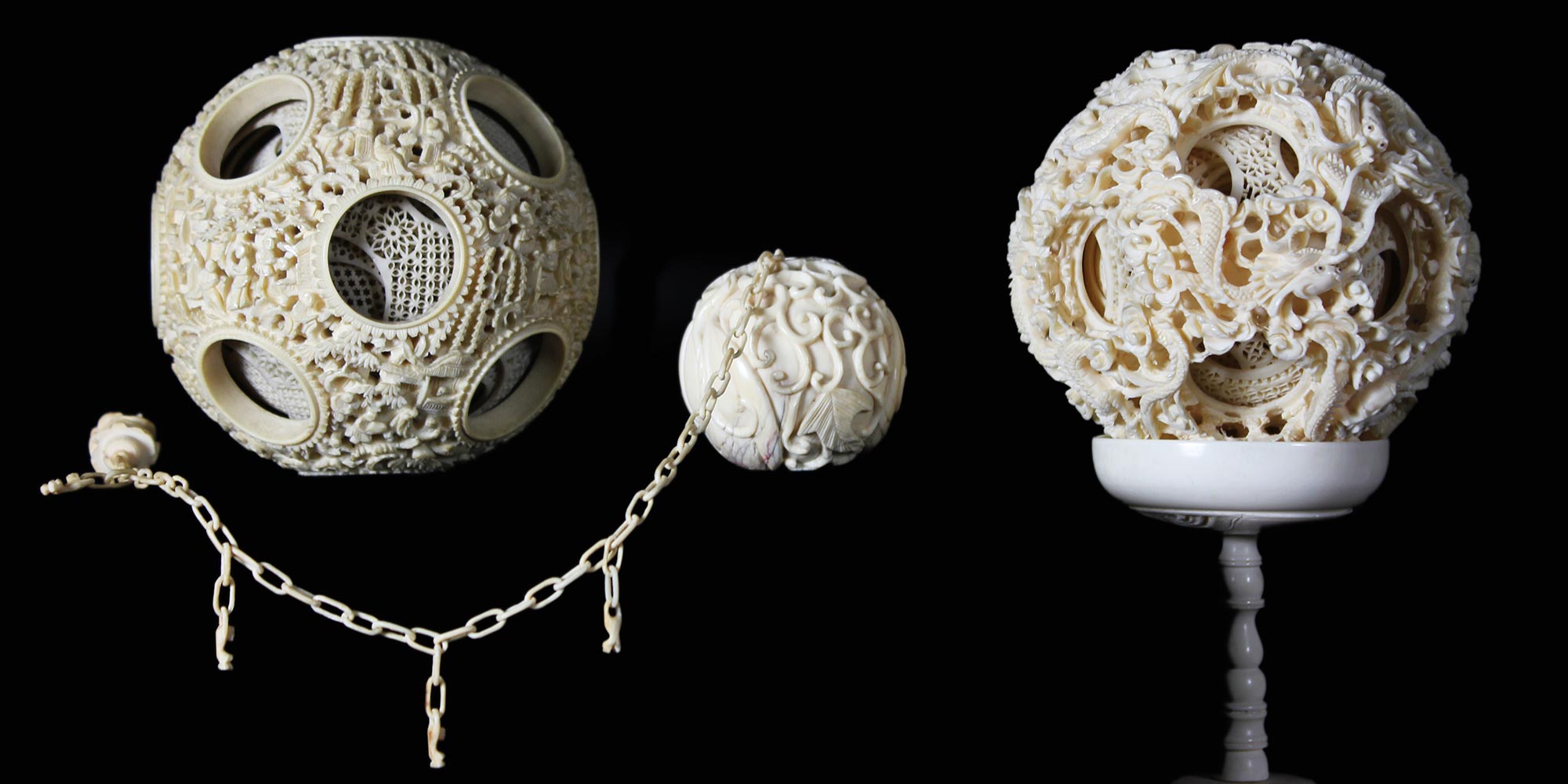
The Chinese Puzzle Ball and other Marvels from Canton (1757–1842)
In 1757, because of perceived political or commercial threats from trade with the West, the Qianlong Emperor declared all foreign trade was to be conducted out of a single port in the south China province of Guangdong (Canton). Tea and spices flowed out of the Canton port, as well as had crafted goods such as silk, porcelain, ivory, lacquerware, and silver goods, which became marvels of the West, such as the Chinese puzzle ball. Chinese puzzle balls are ornate decorative items that consist of several concentric spheres, each of which rotates freely, carved from the same piece of material. These curiosities are on exhibition, along with export porcelains, silver, and other items.
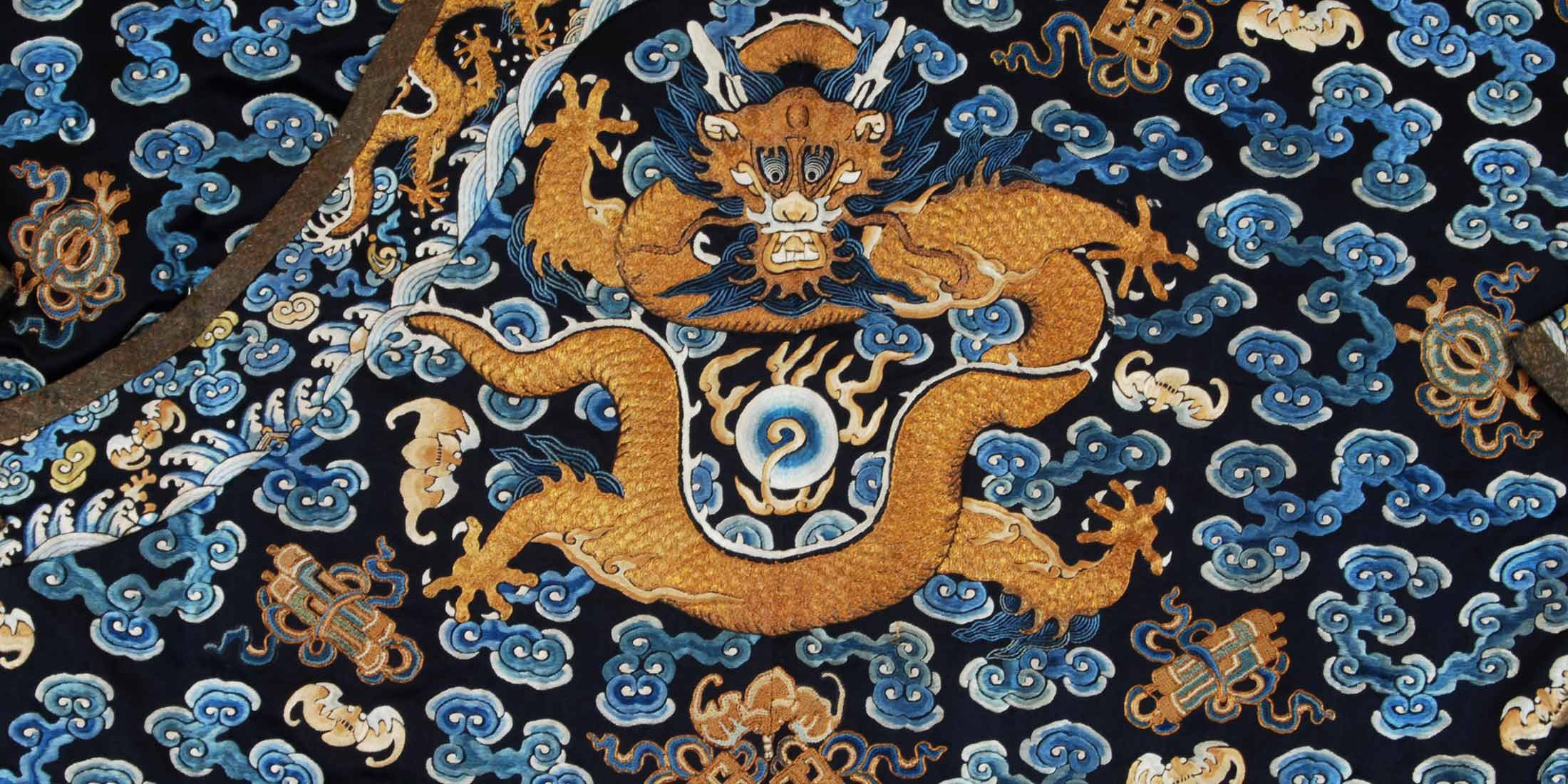
The Imperial Dragon Robe
Dragon robes were predominantly worn by male members of the Chinese bureaucracy, although women possessed garments which exhibited some similarities. These robes are mostly blue, but brown, turquoise, orange, yellow and red ones do exist. This robe features five-clawed dragons amidst cloud clusters, interspersed with bats and Buddhist emblems. Water and mountians adorn the hem. The high quality of the gold couching and embroidery indicate this robe must have been made for a person of important status.
On loan from the Kinsey International Art Foundation
Upcoming Exhibitions
Coming Soon
Past Exhibitions

Passion For Form: Selections of Southeast Asian Art from the MacLean Collection
January 2019
“Passion for Form” was the title for the first public touring exhibition of some of the Southeast Asian treasures in the MacLean Collection in 2008. Southeast Asian pottery, bronze and sculpture have long fascinated the MacLean family.
This exhibition of the MacLean Collection outside of its home on the north shore of Chicago is intended to help students of all ages learn more about the beauty and development processes of these designed objects. The MacLean Collection is intended to help future students and scholars learn about the extraordinarily skilled people that lived in Southeast Asia over the past four thousand years.
This exhibition is in conjunction with the exhibition "Southeast Asian Ceramics: Selections from the Collection of James E. Breece III." A two-part catalog was produced for these two exhibitions.
A digital copy of the catalog can be downloaded here.
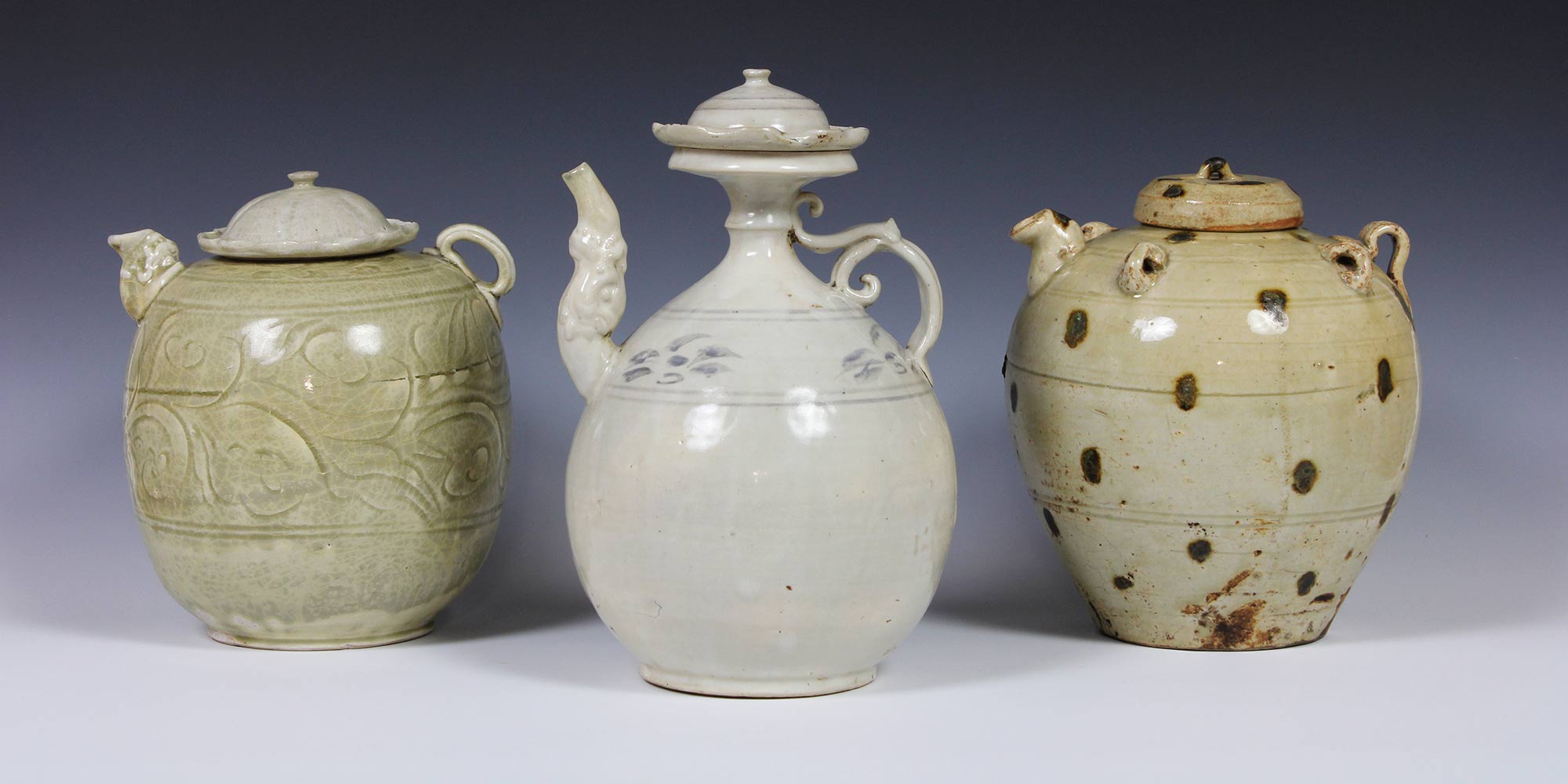
Southeast Asian Ceramics: Selections from the Collection of James E. Breece III
January 2019
More information on this exhibition can be found here.
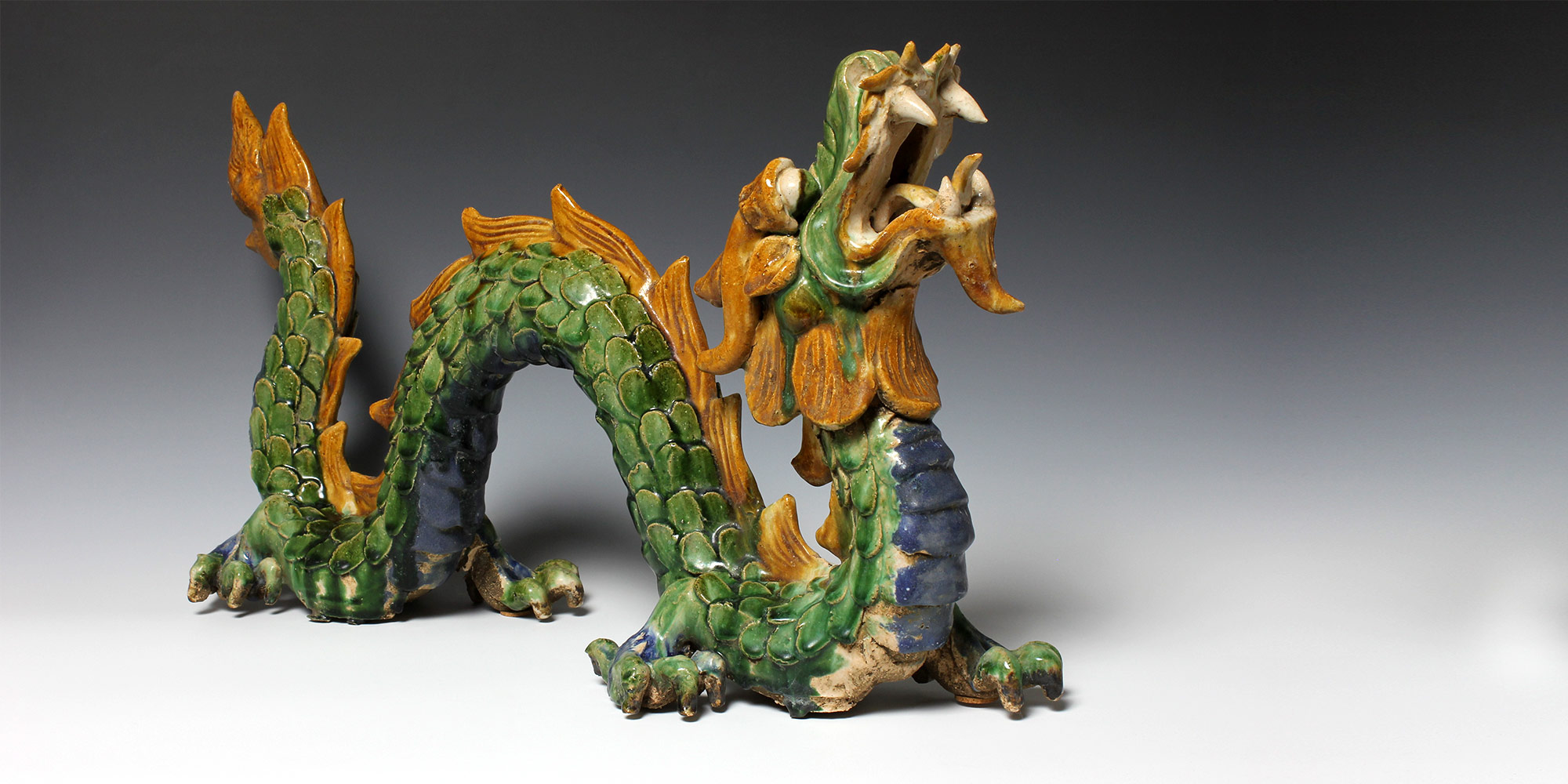
Dragons in Asian Art
June 2018 through spring 2019
The dragon is universally recognized as a symbol of the east, and today it is often used to market or brand anything related to China or Asia. This mythical beast’s origins are not known, but the earliest depictions of dragons in Asia can be attributed to jades found from the neolithic era, some 7000 years ago. Ancient Chinese writings also document dinosaur bones being discovered and referred to as “dragon bones” to be used for medicine.
Asian dragons do not breath fire as in Western culture, these serpentine creatures are instead associated with water and weather. They are said to summon rain, and move the seas and rivers. With the weather important for farming and fishing, dragons were revered and worshipped. Dragons became representations of strength, with emperors using dragon imagery as symbols of their power.
This exhibition features dragons as depicted in Asian art, including pieces from China, Japan and Vietnam on loan from various collectors.

Dogs from Han to Qing
February 2018 - June 2018
Dogs were among the earliest animals domesticated in China. Remains of dogs have been found in the oldest neolithic settlements, and by the Shang dynasty excavations reveal hardly a tomb or building consecrated without a scarfical dog. Ultimately, human and animal sacrifice was replaced pottery figures during the Han dynasty. There was widespread passion for dogs during the Han dynasty among royal families and aristocrats, as many of these ceramic dogs have been found during tomb excavation.
Dogs are also associated with the Chinese Lunar Calendar. It was during the first century AD that a set of twelve animals, namely rat, ox, tiger, rabbit, dragon, snake, horse, ram, monkey, rooster, dog, and pig, were used to represent a repeating twelve-year cycle. In honor of this Lunar New Year, the year of the dog, Heritage Museum of Asian Art is hosting an exhibition featuring early images of dogs from the Han to Qing dynasty.
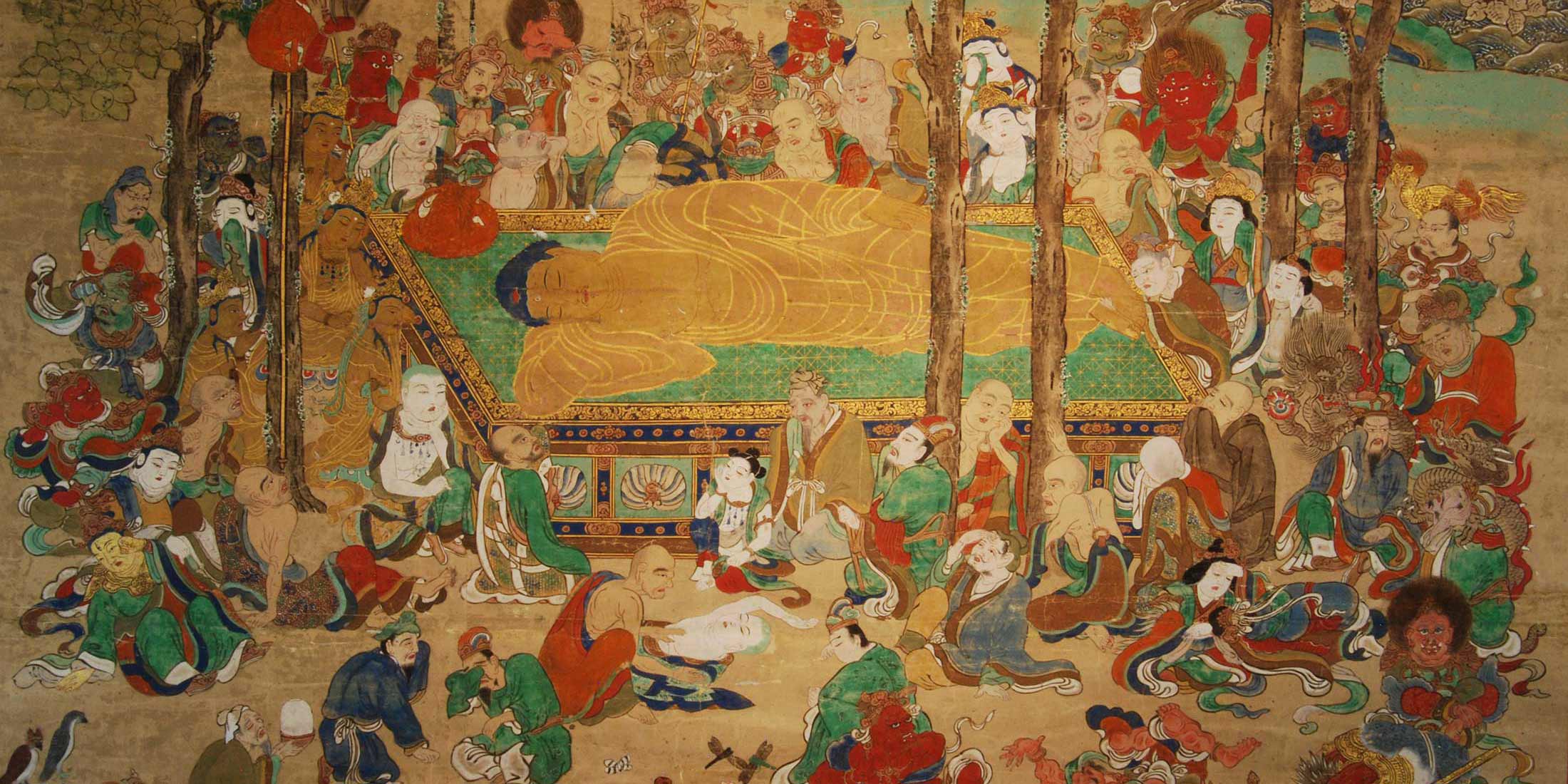
Parinirvana of Buddha Shakyamuni
The Death of Buddha: An Iconic Japanese Buddhist Painting
January 2018 - June 2018
The life story of the Buddha is central to Buddhism and often illustrated. His death is particularly captivating for the religious, for it is upon his death that the Buddha is said to have achieved parinirvana or nirvana-after-death, the ultimate goal of an enlightened being. This painting’s iconic composition can be found in a painting dated to 1086, currently located in Koyasan Japan.
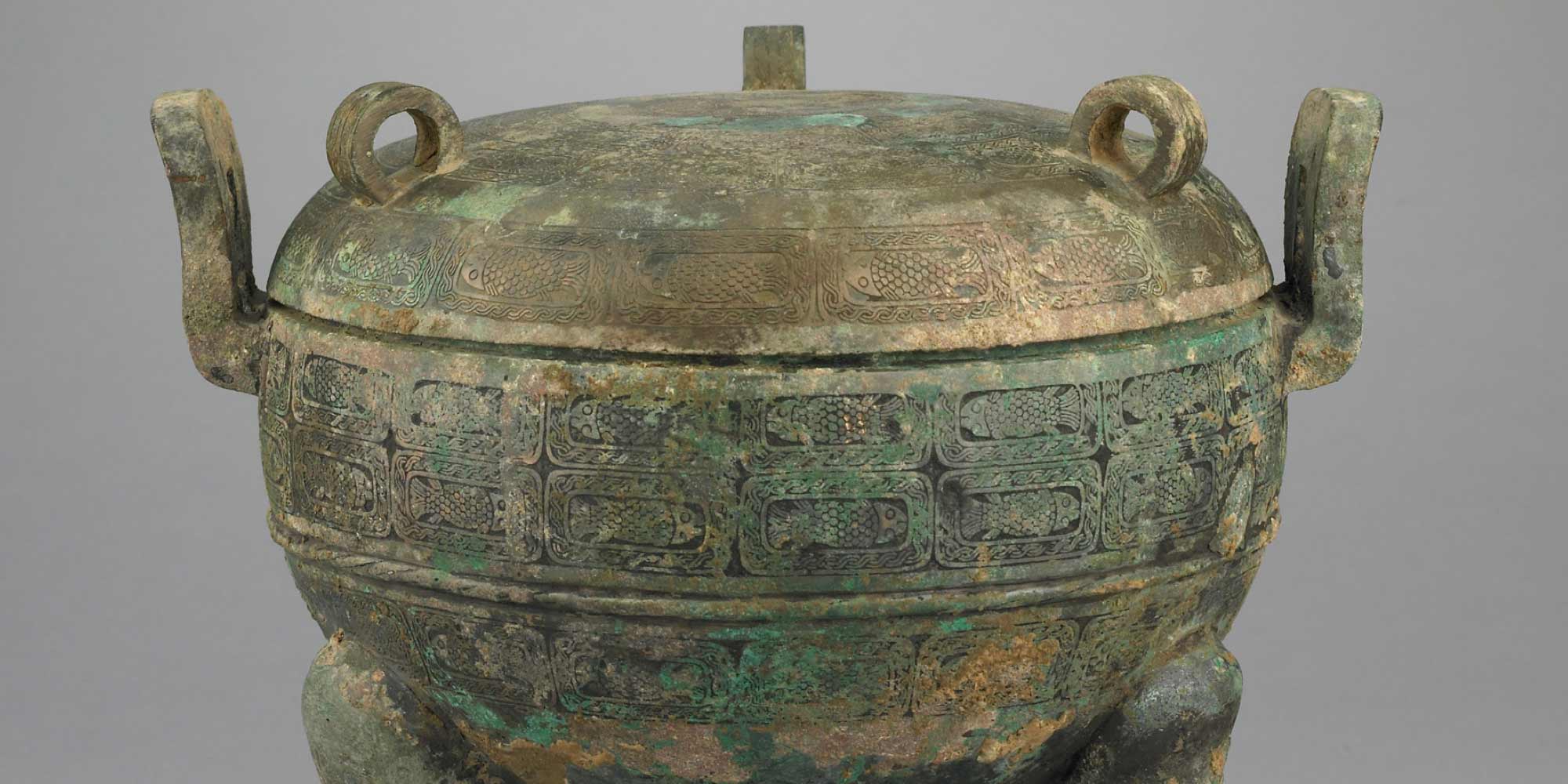
Chinese Ritual Bronzes: Selections from the MacLean Collection
June 2017 - February 2018
Ancient Chinese bronzes are not only examples of artistic excellence, but also are important historical and cultural markers. The MacLean Collection has generously loaned Heritage Museum of Asian Art a selection of exceptional bronzes for this exhibition.

Mapping an Empire: A "Geographical Map of the Everlasting Unified Qing Empire"
June 2017 - January 2018
The Qing dynasty court was expansive and felt their realm was wherever they had influence. On this map, the intentionally vague geopolitical lines of the frontiers and beyond clearly indicate this perception and confirmed the Qing notion of the world as they conceived of it. This is a very accurate map in that it portrays all the administrative bodies that are used for governance indicating the tax base and communication systems. Woodblock-printed in 1811 and displayed on eight hanging scrolls, this large map is generously on loan from The MacLean Collection.
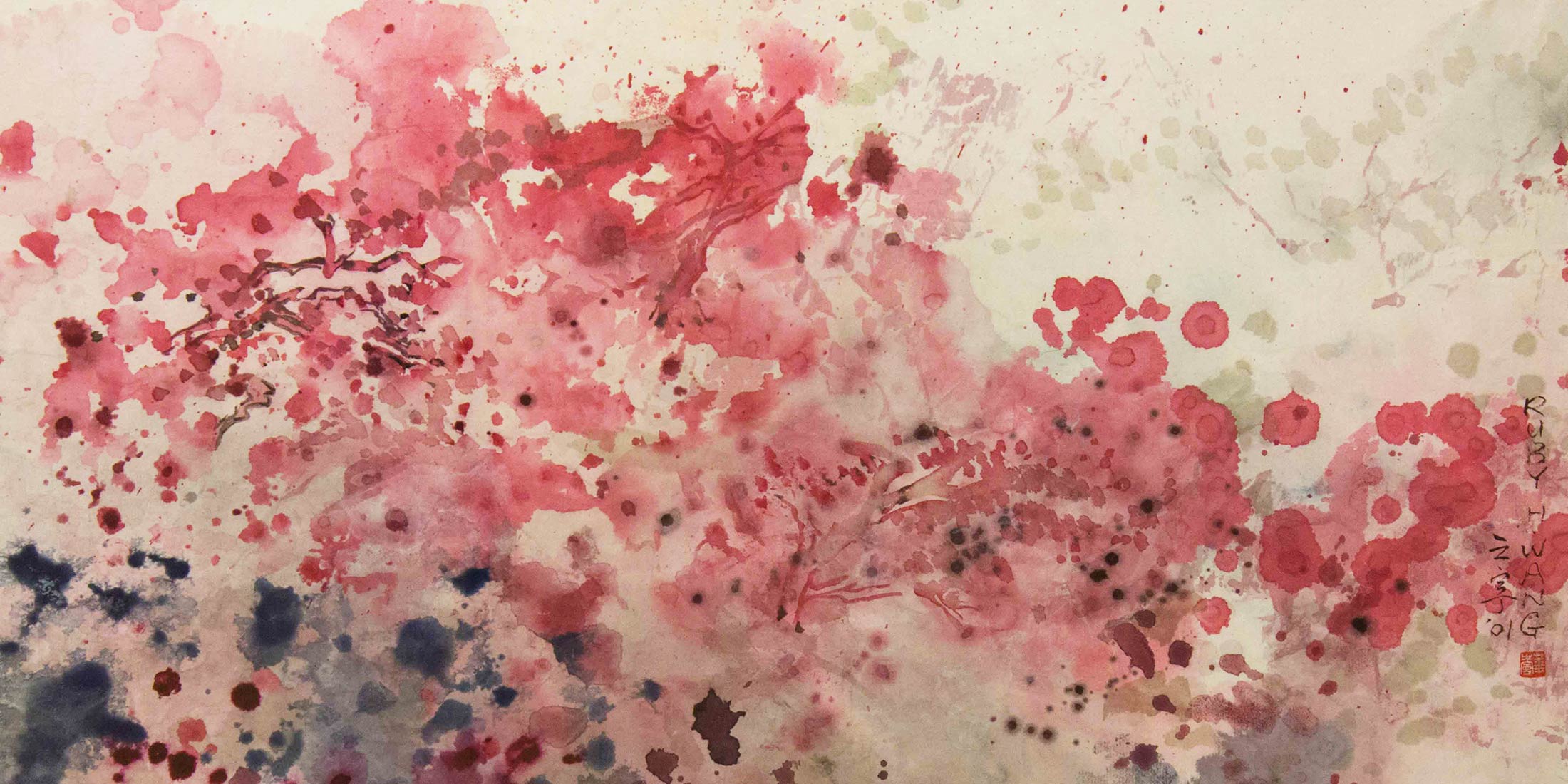
Ruby Wang - Living Water in Ink
September 2016 - Fall 2016
As a lifelong artist traveling the world for inspiration, Ruby H. Wang (née Hwa Zhi-Ning, 1932) fully experienced the coexistence of Eastern and Western cultures where the "intersections and contrasts" of the two cultures can be seen in her work. While maintaining her roots in Chinese traditional ink painting, she explores and experiments with new concepts and techniques which has added new dimensions to her unique style of ink painting with watercolor.
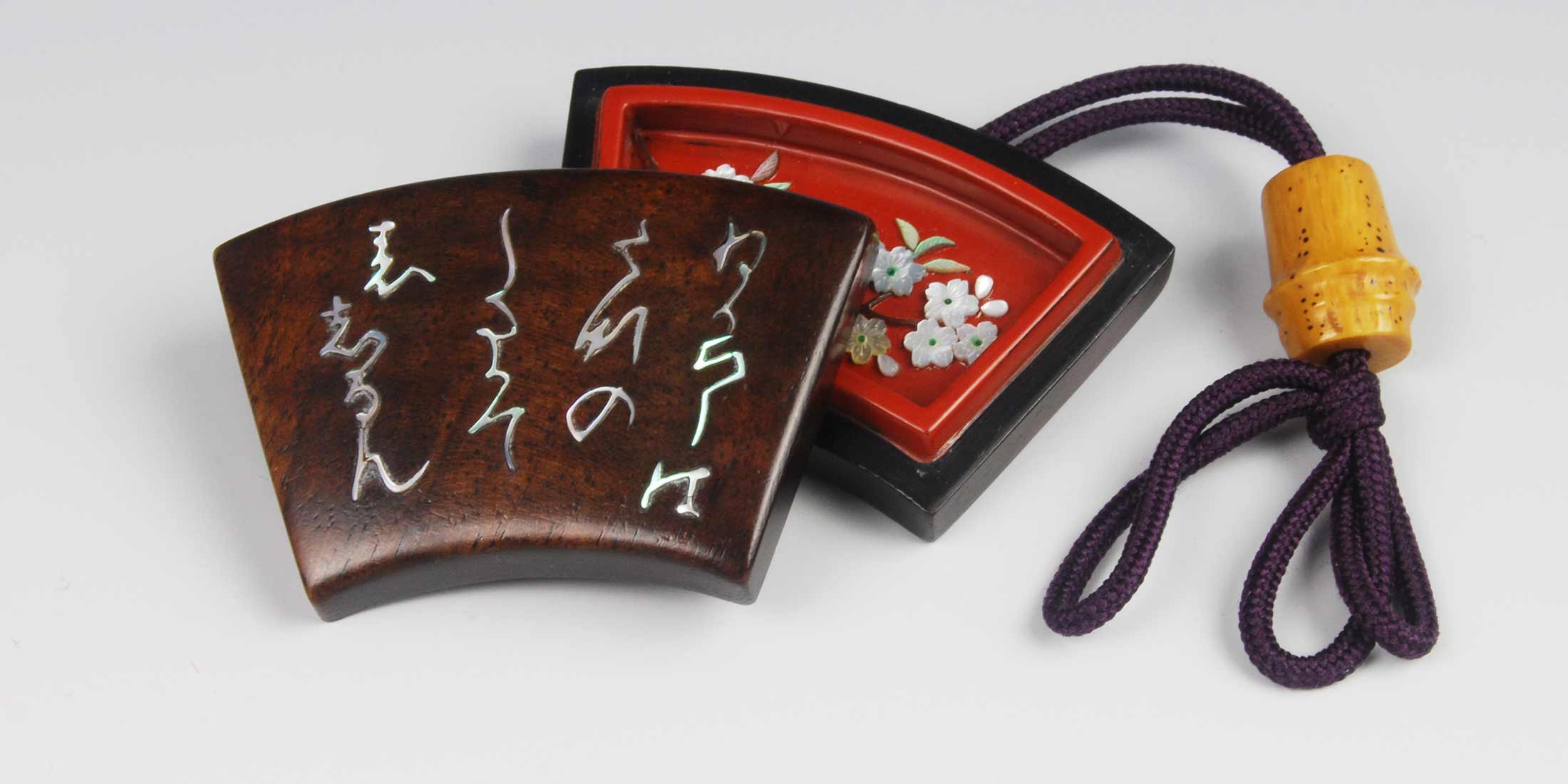
The Poetry of Netsuke: Selections from the Book
April 2016 - Fall 2016
The distinctive art forms of poetry and netsuke from Japan can be closely linked. Both are small, intimate in form, and often subtle in meaning. Much of their beauty is implied and unspoken. The hallmarks of both netsuke and Japanese poetry are brevity, simplicity, and restraint. Many netsuke carvers and poets are especially fascinated by the beauty and mystery of nature. The netsuke in this exhibit are from the book The Poetry of Netsuke. Some of these netsuke are inscribed with, or were directly inspired by specific famous poems of Japan. This exhibit is on loan from the Kinsey International Art Foundation.
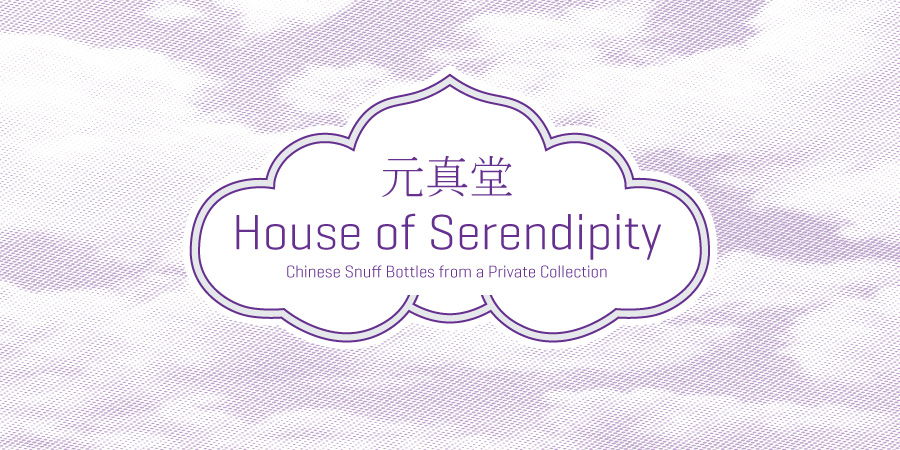
House of Serendipity: Chinese Snuff Bottles from a Private Collection
October 2015 - January 2016
Although smoking tobacco was banned in 17th century China, it was a part of social ritual to use snuff (powdered tobacco). Snuff was considered to be a remedy for common illnesses and offering a pinch of snuff was a common way to greet friends and relatives. Snuff bottles became an object of beauty and a way to represent status and wealth. Decorative bottles were, and remain, time-consuming in their production and are thus desirable for today’s collectors. House of Serendipity is an exhibition of a private collection of snuff bottles, hosted by Heritage Museum of Asian Art, to coincide with the International Chinese Snuff Bottle Society Convention held in Chicago, October 2015.
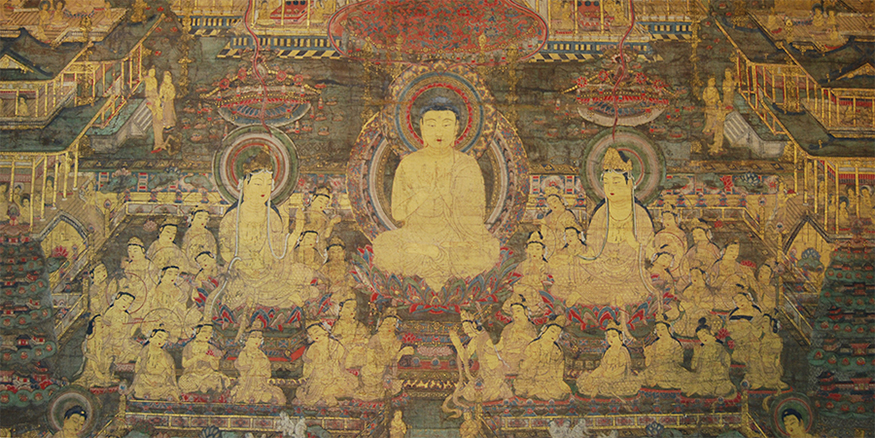
Taima Mandala
June 2015 - December 2015
The Taima mandala (mandara) is the principal religious icon of the Jodo (Pure Land) sect of Buddhism founded in twelfth-century Japan. It depicts the iconic Western Paradise of Amida and is originally modeled on a supposed eighth-century Chinese tapestry preserved in the Taimadera Temple in the old city of Nara. The Taima mandala Heritage Museum of Asian Art has on display is an exceptionally large painting from 14th/15th century Japan.

Images of Netsuke
June 2015 - December 2015
Netsuke are miniature sculptures that were invented in 17th-century Japan. They served as a counter weight to hold a tobacco puch on a mans sash. Soon, these little pieces of art became quite collectable. Most netsuke collectors now collect netsuke out of context (detached from the inro and pipecases, and now sitting on their display case shelves). This exhibit looks at some important historic questions, such as “How were netsuke worn?” and “How did the artists of the 19th century see netsuke as part of the clothing of the period?” Since most netsuke and sagemono ensembles were originally worn, mostly by men, and on the rear hip, they do not show up in most woodblock prints, which show people facing the viewer. This is part of the difficulty of documenting netsuke in a correct historic perspective, which goes far beyond just collecting beautiful carvings. The pieces on display for this exhibit are from The Norman L. Sandfield Collection.
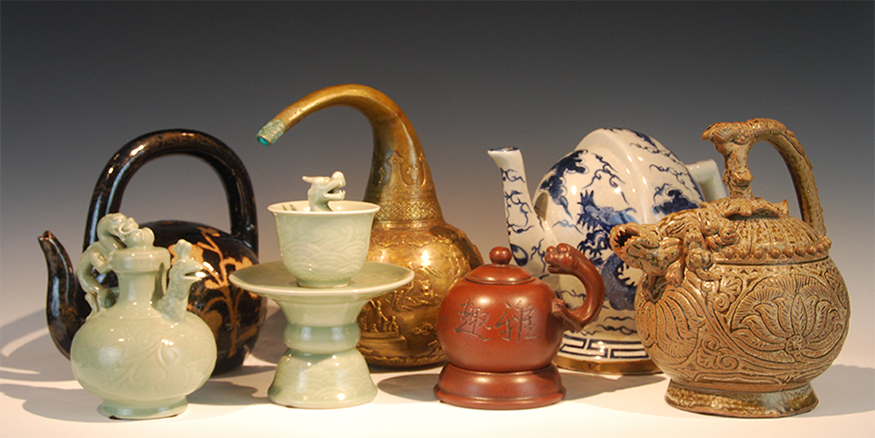
Chinese Puzzle Vessels
June 2015 - December 2015
Puzzle vessels, which go under various names, are a popular curiosity around the world. They have been found in at least 24 countries and at least five ancient cultures, including those of Canaan, Greece, Phoenicia, Egypt, and Turkey. Puzzle vessels are most often made of ceramics, although other materials, such as pewter, brass, and cloisonne have also been used. Examples of these vessels will be on display, such as “justice cups” and “reversed flowing pots.”
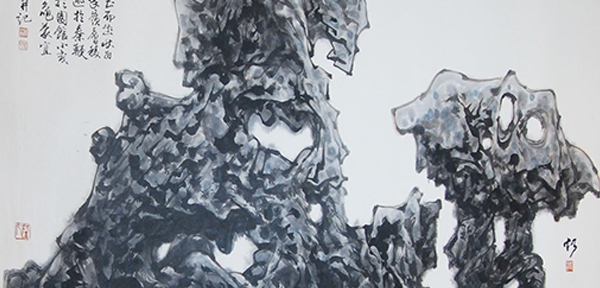
Imperial Rock Paintings from the Forbidden City
June 2014 - December 2015
Prof. Lin Chao, China Academy of Art, Hangzhou
Professor Lin Chao was granted rare access to paint the imperial rocks of the Palace Museum in the Forbidden City, Beijing. The paintings on display here showcase various techniques and styles of painting these rocks, which are traditionally appreciated by Chinese scholars.

Asian Art from American Collections
June 2014 - December 2015
Since the turn of the twentieth century Americans have been collecting and admiring Asian art. For the Heritage Museum’s inaugural exhibition the museum hosts pieces of work including Japanese netsuke, Korean pottery, and Chinese paintings.
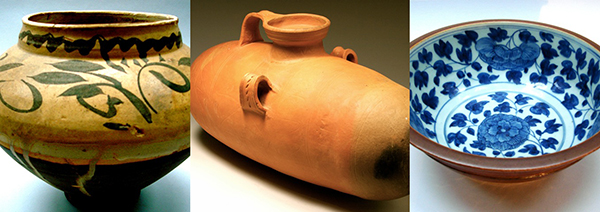
Chinese Folk Pottery: The Art of the Everyday
June 2014 - July 2014
This exhibition explores contemporary folk pottery produced within the diversity of Han and ethnic pottery communities across China. Throughout the 8,000 years of China's ceramic history, the vast majority of pottery produced have been utilitarian objects created for average consumers. The ceramics on display in museums and collected by connoisseurs are often represented by the sophisticated, refined imperial ceramics for the elite. Objects of daily use have often been overlooked for critical appreciation of its techniques and aesthetics. The works in this exhibition were created for village peasants by Tibetan, Dai, Bai and Han potters. The objects were collected between 1995 and 2009.